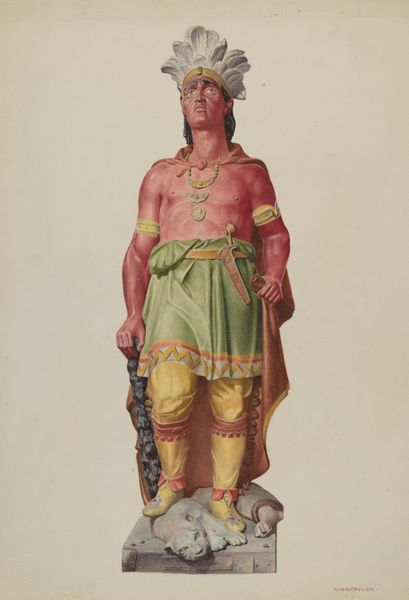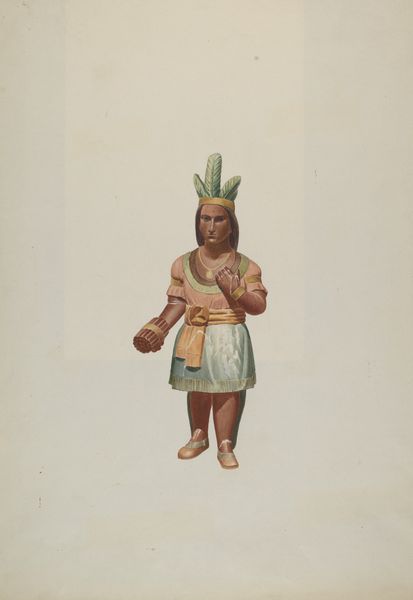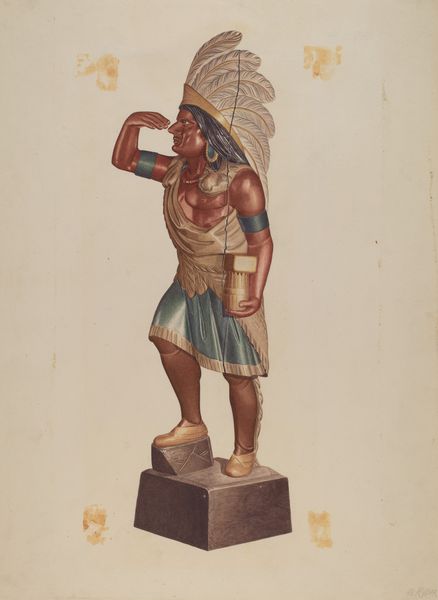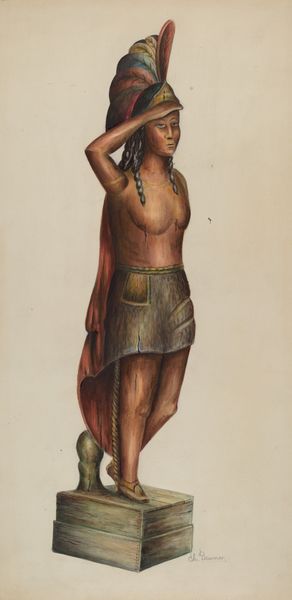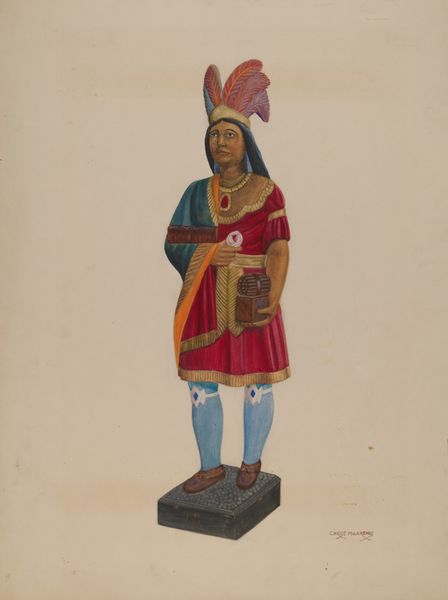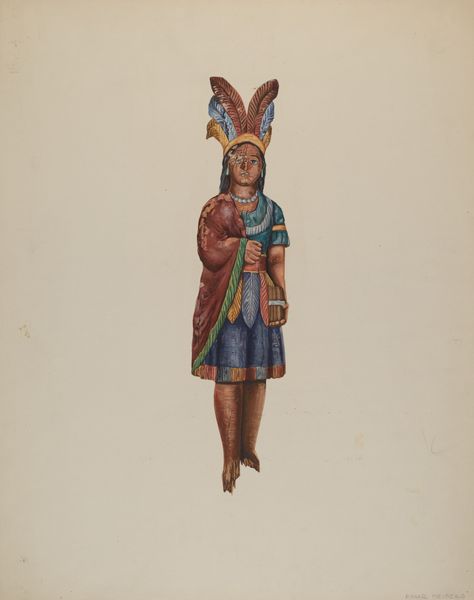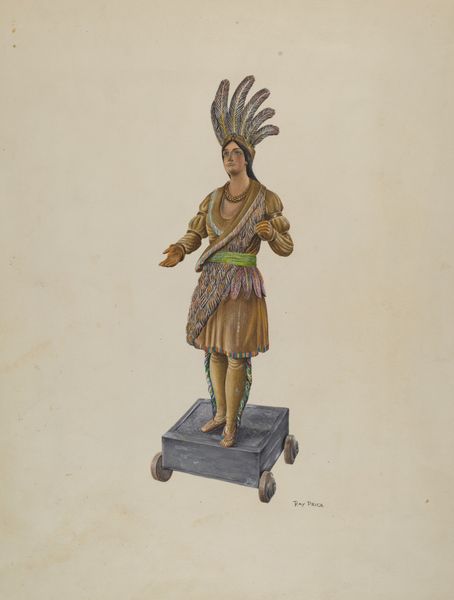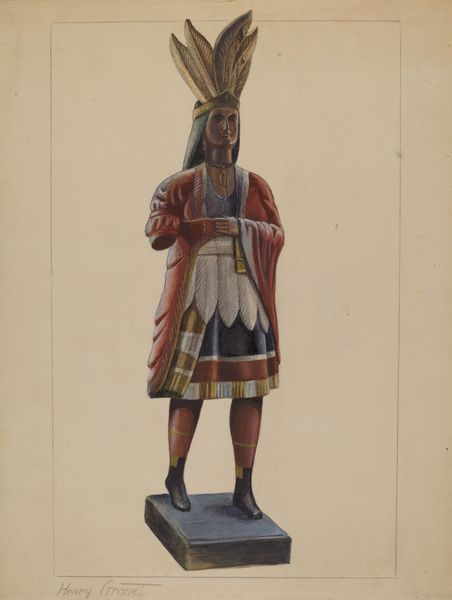
#
portrait
#
caricature
#
figuration
#
watercolor
Dimensions: overall: 49 x 36.2 cm (19 5/16 x 14 1/4 in.)
Copyright: National Gallery of Art: CC0 1.0
Editor: Here we have Violet Hartenstein's watercolor drawing "Cigar Store Indian" from around 1941. It looks like a colorful depiction of a wooden sculpture. What strikes me is how meticulously she’s rendered the textures. What do you make of this piece? Art Historian: Well, the title "Cigar Store Indian" tells us a lot. These figures were, and sometimes still are, used as advertisements. It's a representation steeped in a complicated history of commercialism, colonialism, and the romanticizing—often inaccurate—of Indigenous cultures. Why do you think Hartenstein chose this subject? Editor: Hmm, perhaps she found the object itself visually interesting? I am just wondering whether she meant anything else, maybe connected to the position of Indigenous people at the time? Art Historian: Absolutely, and that's where the social history comes in. Consider that in the 1940s, Native Americans were navigating complex relationships with the US government, facing issues of land rights, cultural preservation, and discrimination. Hartenstein’s artistic choices might reflect her attitude about that historical backdrop, right? Do you see any artistic choices in particular that may relate to these political circumstances? Editor: Looking at how precise she made the depiction of every detail on it I might suppose she considered the real statues valuable objects… Although maybe even the opposite – showing this is just kitsch! It’s really interesting how the context completely changes the way you might perceive something like that. Art Historian: Exactly. Artists often engage with these loaded symbols, and the meaning isn't always straightforward. Looking closely at art reveals not only the artist’s vision but also the socio-political dynamics that inform both its creation and our perception of it. What will you take away from this today? Editor: Definitely to never take art at face value, and look deeper into both historical and current perceptions.
Comments
No comments
Be the first to comment and join the conversation on the ultimate creative platform.
